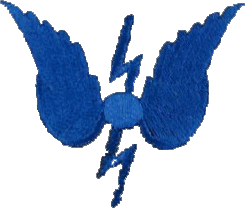|
WHERE USED/FITTED |
|
ARC Transmitters type 14, 15 and 16 (and similarly 17, 18 and 19).
The origin of the Arc transmitter using the Poulsen principle is well documented and fully covered in the 1900-1913 section. The Arc series ran from Type number 14 to Type number 19 and come 1930, they were still fitted in some ships of the Fleet. An Arc set was fitted with a Spark set and the type of Arc depended upon the class of ship and the type of spark transmitter fitted in conjunction. The following list shows the fitting pattern:-
(a) Submarines Spark Type 10 with Arc Type 14
(b) Gun Boat and Destroyers Spark Type 4 with Arc Type 15
(c) Cruisers and Sloops Spark Type 1 or 2 with Arc Type 16.
The frequency range varied accordingly to the size of ships and thus the size of aerial.
The Type 16 is fitted in large ships because of their 220V DC ships mains so that the Type 16 has a motor booster and the Types 14 & 15, a motor generator. In the case of submarines where large variations of ship's voltage are experienced arrangements are introduced to keep the motor running at an even speed. The submarine was also at a disadvantage with an Arc (and also with a Valve later) because an Arc would not burn on the aerial owing to a wet deck insulator surface. To try and rectify this, a 'drying out' condenser was fitted between the bottom of the deck insulator and earth. When on the surface and using the Arc Type 14, quite often the sea spray would dowse the Arc and she would have to shift over to using the Spark Type 10 transmitter.
In the file "1913 Poulsen Experiments" (which can be found in the 1900-1913 section) we discuss in detail the working of the Arc transmitter. In that section, we say that the Navy is working on a system to SHUNT the Back wave, known as the SPACE. In these sets (Type 14, 15 and 16), they built-in both the SHUNTING and the SPACING systems describe in the Poulsen Experiments. Clearly, it was never a good idea to have FST Morse in the first place and the Shunted Method was laid down as being the primary method of operating. The instruction stated that the big disadvantage of the Spacing Wave necessitated the aerial to be always radiating as the Arc is burning. This was not only undesirable in terms of issues like DF, but it was frequency spectrum hungry denying the use of the wavelength taken up by the Spacing Wave for operational use. A Shunted system radiates one frequency only just as we have in today's systems, which is called the Mark or the Marking Wave.
Like all Arc transmitters, the system was the sum of its many parts, and this configuration included two crucial parts which were both liquid! First off, although the Arc could burn in a strong magnetic field, the Navy chose to keep the Arc burning correctly in a gaseous environment, so the Arc was drip fed by a continuous supply of methylated spirit to the anode of the Arc which when burned, formed a hydrogenous vapour, and secondly, the system (where the anode could burn white hot) had to be cooled, so there was a water-cooling provision. |


